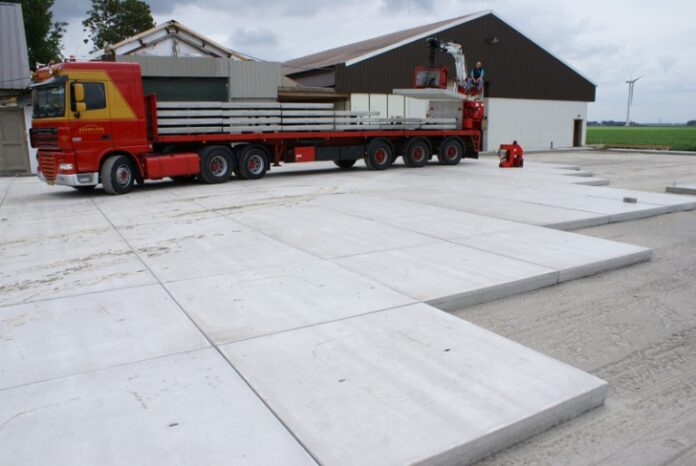Large concrete slabs offer a modern and sophisticated alternative to traditional pavers for patios, walkways, driveways and pool decks. These slabs, sometimes reaching sizes of 10 feet by 10 feet, create a clean, expansive feel and minimize the appearance of grout lines.
While pre-cast slabs are available, you can achieve a more custom look and potentially save on costs by using interlocking concrete block molds, also known as concrete paving molds.
Choosing Concrete Paving Molds
Concrete paving molds come in a wide variety of shapes and sizes, including squares, rectangles and even geometric shapes, allowing you to create a unique design for your outdoor space. Some molds even feature textured finishes that mimic the look of natural stone, such as flagstone or slate.
When choosing concrete paving molds, consider the overall size and style of your project. Larger slabs are ideal for creating a sense of openness in spacious areas, while smaller slabs might be better suited for winding walkways or courtyards.
Think about the overall function of the paved area as well. For areas with high foot traffic like driveways, smaller slabs with a textured surface might provide better traction.
Planning Your Large Slab Project
While large slabs offer undeniable advantages, it’s important to carefully plan your project before getting started. Here are some key factors to consider:
- Size and Scope: Large slabs come in a variety of sizes, and it’s important to choose slabs that are proportionate to the size of your patio, walkway, or driveway.
- Base Preparation: Just like any paving project, proper base preparation is essential for the success of your large slab installation. The base should be well-compacted to prevent settling and cracking of the slabs.
- Drainage: It’s important to ensure proper drainage to prevent water from pooling around the slabs. This may involve grading the sub-base and installing a drainage system.
- Professional Installation: While some experienced DIYers may be comfortable installing large slabs themselves, the size and weight of these slabs can make them challenging to handle. Improper installation can lead to serious problems down the road, so consider hiring a professional concrete contractor to ensure a flawless and long-lasting result.
Creating Your Concrete Slabs
Now comes the concrete! It’s recommended to use a ready-mix concrete specifically designed for pavers. This type of concrete typically has a higher compressive strength and is less prone to cracking.
Follow the manufacturer’s instructions for mixing the concrete, paying close attention to the water-to-cement ratio. A wetter mix might be easier to work with when filling the molds, but it can lead to weaker slabs that are more prone to cracking.
When pouring concrete into the molds, ensure you fill them completely and vibrate them gently to remove any air bubbles. This helps create a smooth and consistent finish. Use a screed or level to ensure the top surface of the concrete is even.
Once the concrete has begun to set, carefully remove the molds. Depending on the weather conditions, the concrete will need to cure for several days before it can be walked on.
Sealing and Maintaining Your Concrete Slabs
After the curing process is complete, you can add a finishing touch by sealing your concrete slabs. A penetrating sealer helps protect the concrete from stains, moisture and the damaging effects of freeze-thaw cycles.
Choose a sealer that is specifically designed for exterior concrete and follow the manufacturer’s instructions for application. With proper care and maintenance, your large concrete slabs will provide a beautiful and durable surface for your outdoor space for years to come.
Additional Considerations
While DIY concrete slab installation is achievable for the determined homeowner, it’s a physically demanding project that requires careful planning and execution. For larger or more complex projects, consider hiring a professional concrete contractor. They will have the experience and expertise to ensure a successful installation.
